Pantoprazole Foods to Avoid
By Dr. Vishesh Bharucha +2 more

Get,

to manage your symptom
Get your,


4 Cr+ families
benefitted

OTP sent to 9988776655



You’ve successfully subscribed to receive
doctor-approved tips on
Whatsapp

Get ready to feel your best.

Hi There,
Download the PharmEasy App now!!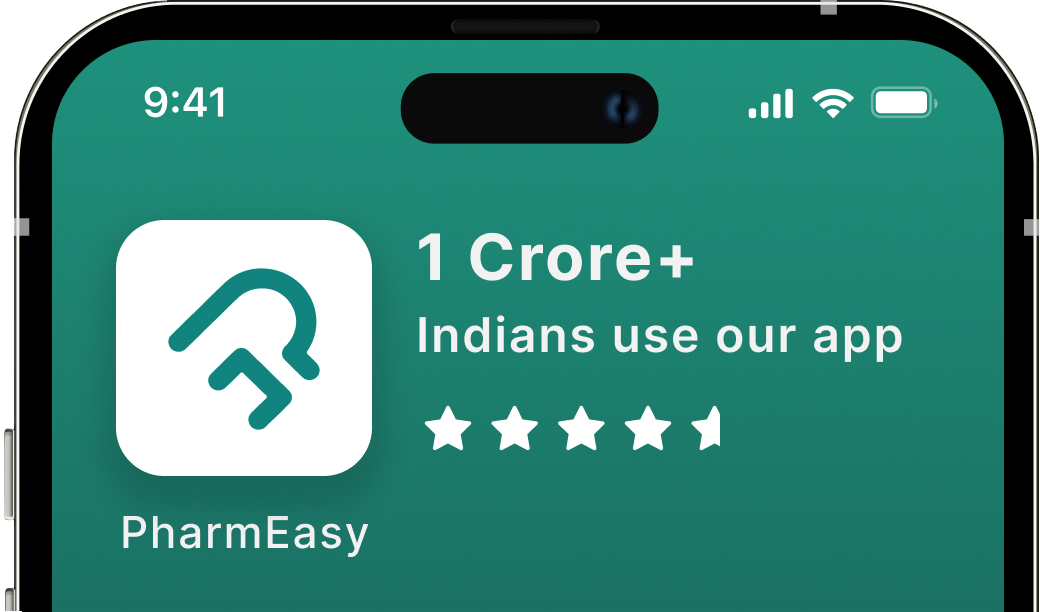


Register to Avail the Offer
Send OTPBy continuing, you agree with our Privacy Policy and Terms and Conditions

Hi There,
Sign up on PharmEasy now!!
Trusted by 4 crore+ families

OTP sent to 9988776655



You have unlocked 25% off on medicines




Code: NU25
By Dr. Vishesh Bharucha +2 more
Table of Contents
Pantoprazole is a medication that belongs to the drug group ‘proton pump inhibitor (PPIs)’, which are often prescribed by doctors for stomach acid-related issues. These commonly include health conditions like peptic ulcer disease, Zollinger-Ellison syndrome, NSAID-induced ulcer and gastroesophageal reflux disease (GERD), among others1. But like any other medicine, there are some do’s and don’ts with pantoprazole as well. Understanding these are key to safe usage and optimal results.
So, in this guide, we’ll talk about pantoprazole. What is it? Why is it needed? Which foods and drinks should be avoided while on this medication? We’ll also discuss drug and nutrient reactions that might occur. Plus, useful tips on food choices will be shared, which can help improve your treatment results. Lastly, preventive steps and monitoring measures are discussed to make the treatment safer for you.
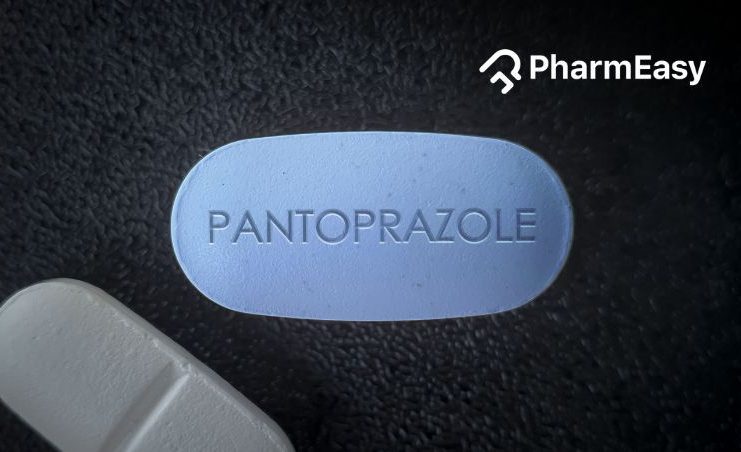
Drawing from my observations and experience, I strongly recommend avoiding food items that may exacerbate gastroesophageal reflux disease (GERD) when undergoing medication. So, it might be best to refrain from consuming spearmint and peppermint while taking medications like pantoprazole.
Let’s begin the discussion with an overview of pantoprazole. We’ll discuss what it is, why it’s used and how it works. Then, delve into what food and drinks to avoid while taking this medication.
It’s a type of PPI (proton pump inhibitor) which doctors prescribe for some gastric health problems. These helps manage issues wherein too much acid is produced in the stomach, leading to certain health conditions such as-
Pantoprazole should ideally be taken 30–60 minutes before a meal, usually in the morning, for optimal proton pump inhibition. Pantoprazole can have adverse effects, including , headache, and upper respiratory tract infection. Thus, pantoprazole should only be taken with a doctor’s prescription.
Now, let’s talk about its uses1.
Pantoprazole inhibits proton pumps in stomach wall lining cells, known as parietal cells. They make and release hydrochloric acid into the stomach. Pantoprazole irreversibly inhibits the H⁺/K⁺ ATPase enzyme in the apical membrane of parietal cells, leading to suppression of acid secretion. So, it helps manage symptoms related to acid reflux, hyperacidity, or mucosal damage due to excess acid1.
As someone who has made observations and collected experience in this matter, I would suggest avoiding the consumption of orange juice while taking medications for gastroesophageal reflux disease (GERD), such as pantoprazole. Orange juice, due to its high acidic nature, may have the potential to exacerbate GERD symptoms. Thus, opting for alternative beverages with lower acidity might be a more suitable choice when taking GERD medications and minimise discomfort.
Certain food and drinks may worsen GERD symptoms even while consuming pantoprazole. To get the best out of your medication, avoid the following items:

Acidic foods can worsen GERD. They stimulate your stomach to produce even more acid. Plus, they can irritate the lining of your oesophagus or reduce lower oesophageal sphincter (LES) tone, worsening reflux2. It’s a common myth that they cause more acid to be produced. Examples of acidic foods are:

Fruits like oranges, grapefruits, and lemons, and their juices may cause irritation leading to worsening of GERD symptoms in some people.
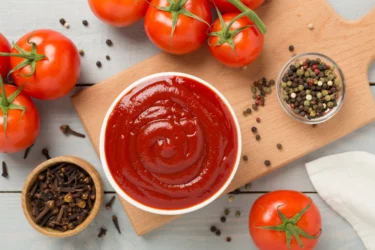
Tomato products like tomato sauce, canned tomatoes and ketchup are highly acidic. So, these can worsen GERD symptoms too.
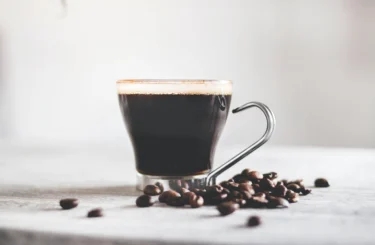
Caffeine boosts stomach acid levels and may relax the lower oesophageal muscles (LES). This can trigger GERD symptoms. Decaf options or herbal drinks can be helpful instead3,4.
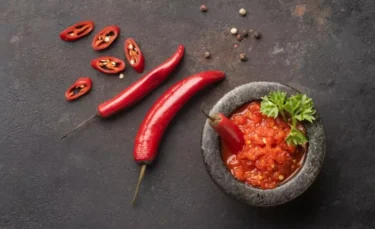
Spicy foods have materials like chili peppers, curry powder, hot sauces etc in them. These all can cause irritation to the oesophagus and fire up stomach acid, causing more heartburn2,3.
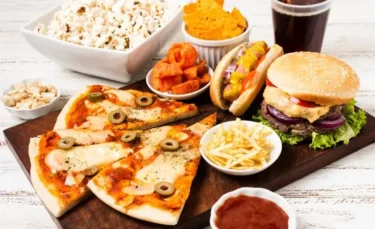
High-fat foods can slow digestion and induce acid reflux by relaxing LES. Some examples of high-fat foods to avoid are2,3:

Food items such as chicken chunks, onion rings, and potato chips could make GERD symptoms worse.
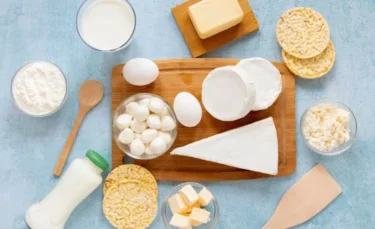
High-fat dairy like cream, cheese, butter, and whole milk might worsen GERD symptoms. Try low-fat dairy or other alternatives instead.

Bubbly drinks like soda and sparkling water can exacerbate GERD symptoms. The bubbles push up pressure in the stomach, spurring stomach contents to flow into the oesophagus3.

Alcohol use can worsen GERD symptoms by relaxing the LES which allows acid to reflux into the oesophagus and worsen GERD symptoms. It also delays gastric emptying, and can irritate the gastric mucosa, all of which exacerbate GERD symptoms. Cutting down on alcohol intake is advised when on pantoprazole. If needed, ask your healthcare provider about what safe levels of drinking are while on this medication5.
When on pantoprazole, it’s vital to know about potential drug and nutrient interactions. Always talk with your healthcare provider before starting any new medicines or supplements.
Pantoprazole could interact with certain medications affecting their usefulness or causing unwanted side effects. Let’s see what these are:
Examples and Effects
Always tell your healthcare provider about the medicines you’re currently on. This can help avoid harmful drug interactions.
Like other PPIs, long-term use of pantoprazole could interfere with the absorption of specific nutrients. This might lead to deficiencies. Here are some examples:
Discuss with your healthcare provider any concerns over potential nutrient interactions. Regular blood tests might be needed to monitor nutrient levels for those using pantoprazole long-term.
To boost overall digestive health and help manage GERD symptoms, a Mediterranean diet or low carbohydrate diet is preferred8. These foods can be included in your diet while on pantoprazole:
Foods with a neutral or slightly alkaline pH help strike a balance in stomach acid levels. They alleviate GERD symptoms. Some examples are:
Foods rich in fibre can boost digestion health and help prevent acid reflux. Some high-fibre options are:
Incorporate lean protein sources in your meal plan. These include:
Also Read: Foods to Avoid While Taking Duloxetine
Certain precautions need to be kept in mind while on pantoprazole to assure both safety and effectiveness. Keep the following points in mind:
Stay alert to side effects, both minor and serious ones like diarrhoea, nausea, headaches and allergic reactions. Always inform your healthcare provider of any long-lasting or severe symptoms.
Severe or persistent diarrhoea could signal Clostridioides difficile-associated diarrhoea, a rare but serious complication of long-term PPI use1.
Acute interstitial nephritis (AIN), a condition affecting the kidney, is also a rare but documented adverse effect of PPIs including pantoprazole.
Also Read: Best Summer Foods to Keep Your Body Cool
Correct dosage, duration of treatment and precautionary measures vary as per the specific populations:
Also Read: What To Eat During Food Poisoning?
Knowing which foods and drinks to avoid, how to monitor medicine interactions, and adopting healthy eating habits are essential when on pantoprazole for maximum benefits and safety. Always work together with healthcare providers to get personalized advice and recommendations, ensuring that pantoprazole remains an effective and well-tolerated treatment for your needs.
How long you are on pantoprazole treatment hinges on your specific health problem and how well you respond to therapy. Always stick to the duration of your treatment as advised by your doctor.
Weight gain is not listed as a common side effect in pantoprazole studies. But everyone’s body reacts differently. If you see great changes in your weight, talk to your healthcare provider.
The right pantoprazole dosage varies based on the individual and the condition treated. Always follow your doctor’s advice on dosage.
Take pantoprazole as directed by your doctor. Usually, it is taken once in the morning 45 minutes before breakfast. Do not break, crush, or chew the tablet/capsule as this can impact its effectiveness.
Disclaimer: The information provided here is for educational/awareness purposes only and is not intended to be a substitute for medical treatment by a healthcare professional and should not be relied upon to diagnose or treat any medical condition. The reader should consult a registered medical practitioner to determine the appropriateness of the information and before consuming any medication. PharmEasy does not provide any guarantee or warranty (express or implied) regarding the accuracy, adequacy, completeness, legality, reliability or usefulness of the information; and disclaims any liability arising thereof.
Comments

Leave your comment...
You may also like
Comments